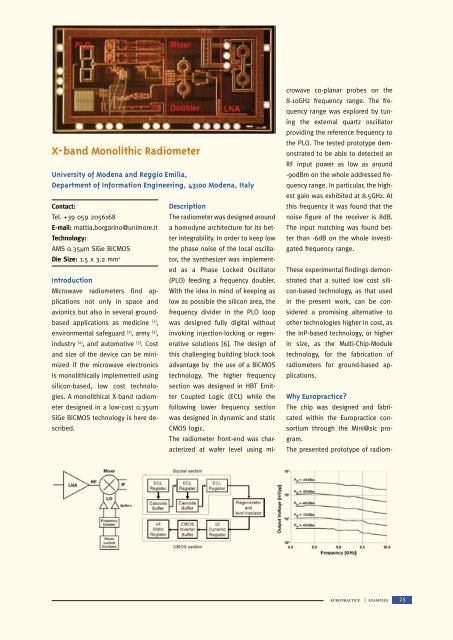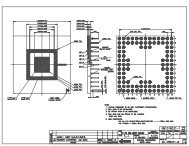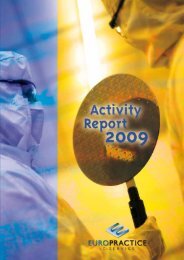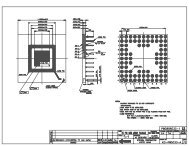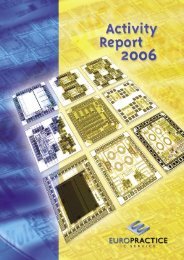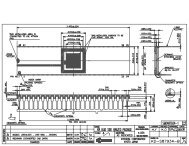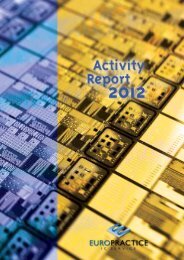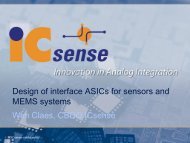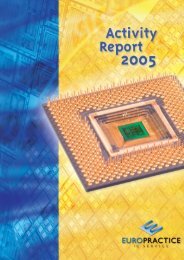Annual report 2008 - Europractice-IC
Annual report 2008 - Europractice-IC
Annual report 2008 - Europractice-IC
You also want an ePaper? Increase the reach of your titles
YUMPU automatically turns print PDFs into web optimized ePapers that Google loves.
X-band Monolithic RadiometerUniversity of Modena and Reggio Emilia,Department of Information Engineering, 43100 Modena, ItalyContact:Tel. +39 059 2056168E-mail: mattia.borgarino@unimore.itTechnology:AMS 0.35μm SiGe BiCMOSDie Size: 1.5 x 3.2 mm 2IntroductionMicrowave radiometers find applicationsnot only in space andavionics but also in several groundbasedapplications as medicine [1] ,environmental safeguard [2] , army [3] ,industry [4] , and automotive [5] . Costand size of the device can be minimizedif the microwave electronicsis monolithically implemented usingsilicon-based, low cost technologies.A monolithical X-band radiometerdesigned in a low-cost 0.35umSiGe BiCMOS technology is here described.DescriptionThe radiometer was designed arounda homodyne architecture for its betterintegrability. In order to keep lowthe phase noise of the local oscillator,the synthesizer was implementedas a Phase Locked Oscillator(PLO) feeding a frequency doubler.With the idea in mind of keeping aslow as possible the silicon area, thefrequency divider in the PLO loopwas designed fully digital withoutinvoking injection-locking or regenerativesolutions [6]. The design ofthis challenging building block tookadvantage by the use of a BiCMOStechnology. The higher frequencysection was designed in HBT EmitterCoupled Logic (ECL) while thefollowing lower frequency sectionwas designed in dynamic and staticCMOS logic.The radiometer front-end was characterizedat wafer level using mi-crowave co-planar probes on the8-10GHz frequency range. The frequencyrange was explored by tuningthe external quartz oscillatorproviding the reference frequency tothe PLO. The tested prototype demonstratedto be able to detected anRF input power as low as around-90dBm on the whole addressed frequencyrange. In particular, the highestgain was exhibited at 8.5GHz. Atthis frequency it was found that thenoise figure of the receiver is 8dB.The input matching was found betterthan -6dB on the whole investigatedfrequency range.These experimental findings demonstratedthat a suited low cost silicon-basedtechnology, as that usedin the present work, can be considereda promising alternative toother technologies higher in cost, asthe InP-based technology, or higherin size, as the Multi-Chip-Moduletechnology, for the fabrication ofradiometers for ground-based applications.Why <strong>Europractice</strong>?The chip was designed and fabricatedwithin the <strong>Europractice</strong> consortiumthrough the Mini@sic program.The presented prototype of radiom-europractice | examples25


